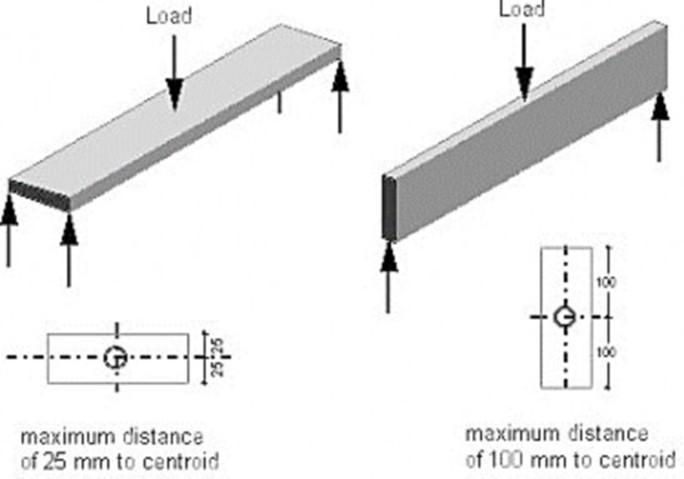
Design Principles of Concrete Structures
Lecture 5
Study of Flexural Behavior (Derivation)
Balanced Steel Ratio, ρb
𝐴𝑆
𝜌 =𝑏𝑑
It is corresponding to that amount of steel which will cause yielding of steel at the same time when concrete crushes.
At ultimate stage:
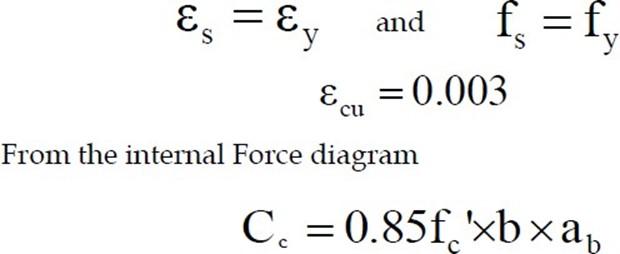
Strain Diagram
ab = depth of equivalent rectangular stress block when balanced steel ratio is used.

Balanced Steel Ratio, Pb , ontd...
For -tl1 1 e lo]1gih.td:i.Jtal equilibrium
T = C
(pb x bx d) x f y = 0. 85cf
‘xb x a
P b == 0. . 8. 5 f ‘ ab
— (1)
Ratio, ρb (contd…)
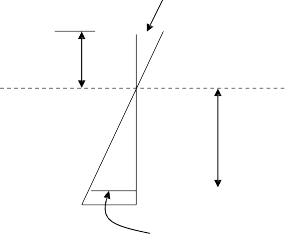
From the strain diagram εcu= 0.00
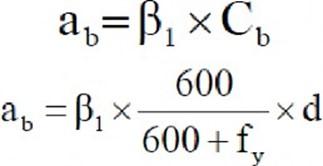
Types of Cross Sections w.r.t.
Flexure at Ultimate Load Level
- Tension Controlled Section
- Transition Section
- Compression Controlled Section
Types of Cross Sections w.r.t. Flexure at Ultimate Load Level
-
Tension Controlled Section
A section in which the net tensile strain in the extreme tension steel is greater than or equal to 0.005 when the corresponding concrete strain at the compression face is 0.003.
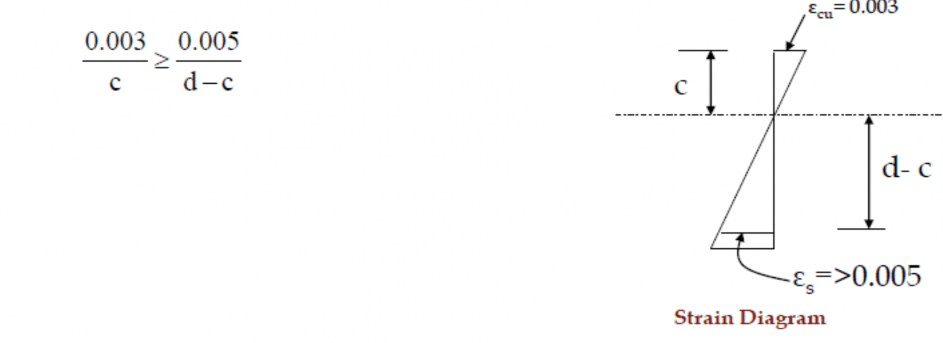
- Transition Section
The section in which net tensile strain in the extreme tension steel is greater than εy but less than 0.005 when corresponding concrete strain is 0.003.

εcu= 0.003

Strain Diagram
εy<εs<0.005
-
Transition Section (contd…)
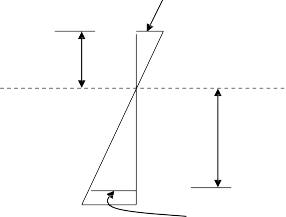
c
To ensure under-reinforced behavior, ACI code establishes a minimum net tensile strain of 0.004 at the ultimate stage.
εcu= 0.003
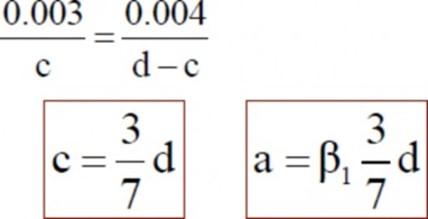 0.004
0.004
Strain Diagram
Both the “Tension Controlled Section” and “Transition Section” are “Under-
Reinforced Section“
In Under-Reinforced Sections steel starts yielding before the crushing of concrete and:
ρ < ρ b
It is always desirable that the section is under-reinforced otherwise the failure will initiate by the crushing of concrete. As concrete is a brittle material so this type of failure will be sudden which is NOT DESIREABLE.
-
Compression Controlled Section (over-reinforced section)
-
The section in which net steel strain in the extreme tension steel is lesser than εy when corresponding concrete strain is 0.003.
-
Capacity of steel remain unutilized.
-
It gives brittle failure without warning.
-


Strength Reduction Factor (Resistance Factor), Φ
- Tension Controlled Section, Φ = 0.9
-
Compression Controlled Section
- Member with lateral ties, Φ = 0.65
- Members with spiral reinforcement, Φ = 0.75
- Member with lateral ties, Φ = 0.65
- Transition Section
-
For transition section Φ is permitted to be linearly interpolated between 0.65 or 0.75 to 0.9.
Strength Reduction Factor (Resistance Factor), Φ
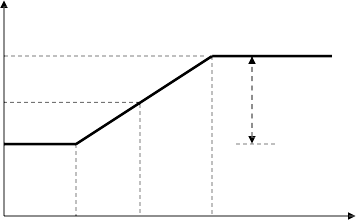
0.25
Transition
Tension Controlled
Compression Controlled
- Transition Section (contd…) Φ
- Transition Section (contd…) Φ
0.9
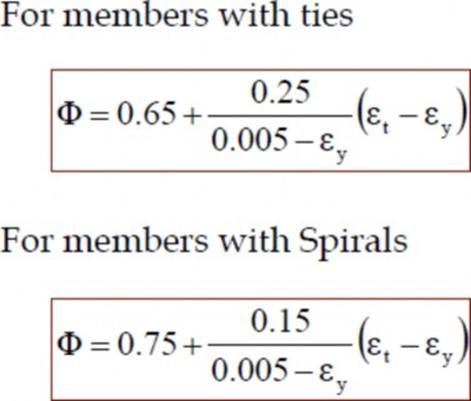
Φ
0.65
ε
εy εt 0.005
εt = strain in extreme tension steel when concrete crushes.
Maxitnutn S, teel Ra tio, Pnax
:For
1
C
T = C

A x fy
== 0. 8.
5f 1‘xb x a.



For tension. conhu fille ,d
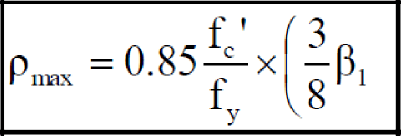
So
e chon
Maximum Steel Ratio, ρmax (contd…)
For transition section
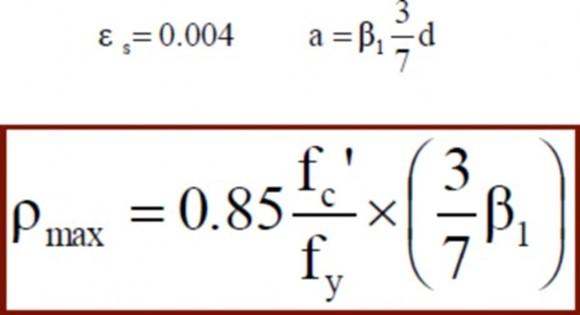
Minimum Reinforcement of Flexural Members
(ACI – 318)
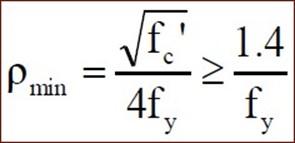
-
The minimum steel is always provided in structural members because when concrete is cracked then all load comes on steel, so there should be a minimum amount of steel to resist that load to avoid sudden failure.
- This formula is not used for slabs.
Concluded






